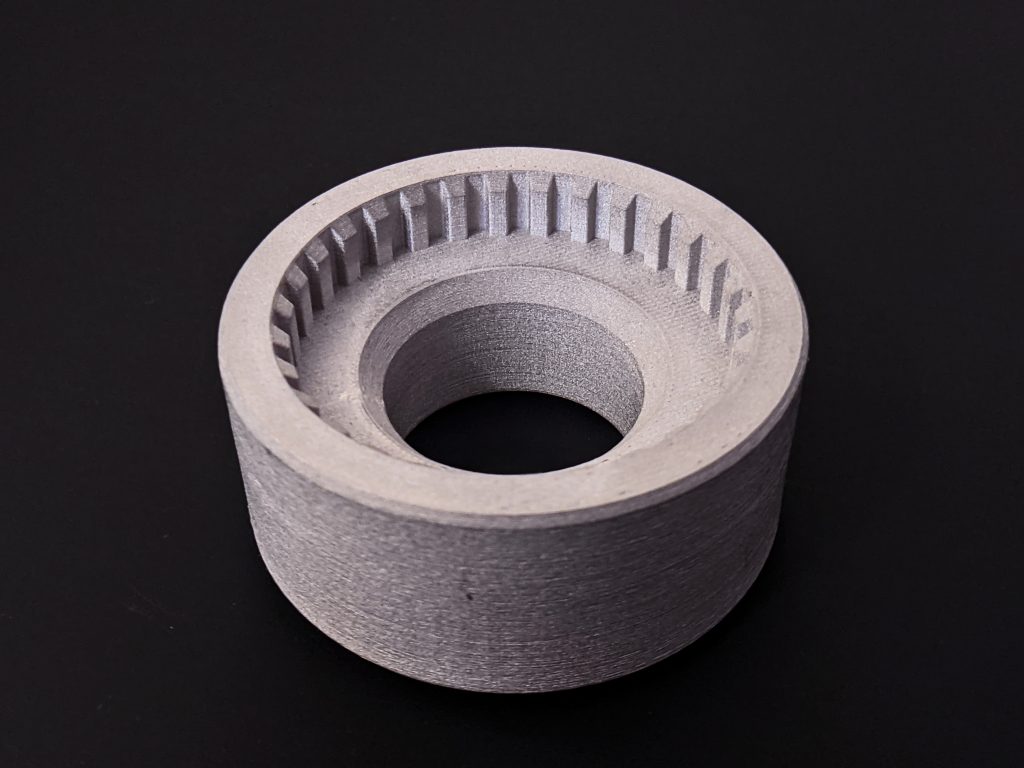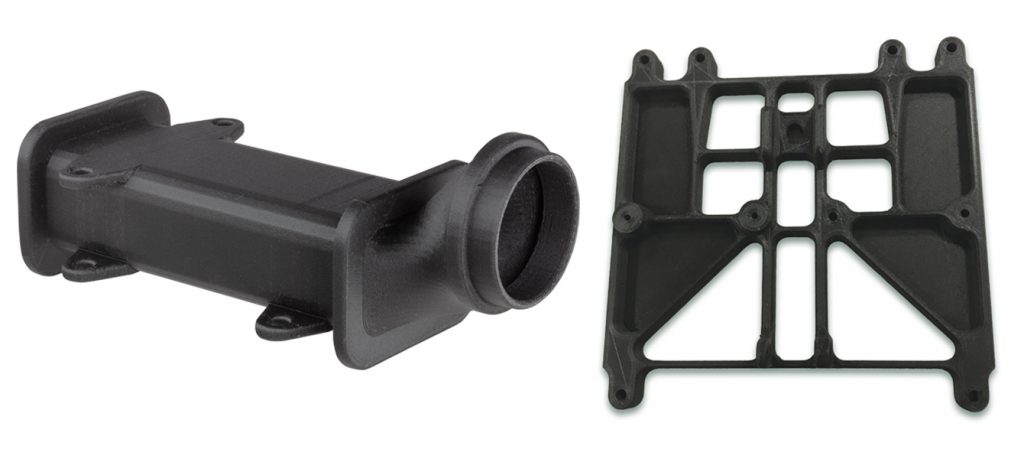3D printer OEMs MakerBot and XYZprinting are the latest to join chemical company BASF Forward AM’s materials ecosystem.
The manufacturers recently qualified materials from Forward AM’s Ultrafuse range of 3D printing filaments for use on their respective 3D printers. The first of the qualifications means users of the MakerBot METHOD 3D printer (and LABS Experimental Extruder) will now be able to produce metal parts using Ultrafuse 316L Stainless Steel. XYZprinting’s PartPro300 xT customers will also be able to leverage BASF’s PET CF15 and PAHT CF15 filaments for carbon fiber-reinforced composite components.

316L Stainless Steel with MakerBot
Qualified as part of MakerBot’s LABS program, Ultrafuse 316L Stainless Steel is characterized by its high strength, rigidity, and excellent wear resistance. As such, the alloy is well-suited to functional prototyping and manufacturing tooling applications such as jigs, fixtures, and robotic grippers.
Firat Hizal, Head of Metal Systems Group at BASF, states, “Ultrafuse Metal Filaments removed the barriers between metal 3D printing and users to make the technology more accessible to a larger audience. We are very excited to have our Ultrafuse 316L part of the MakerBot LABS program. We aim to add our recently launched Ultrafuse 17-4 PH filament, with the Ultrafuse 316L, to make our entire portfolio accessible to MakerBot users.”
Now compatible with the MakerBot LABS GEN 2 Experimental Extruder, 316L filament is first printed as metal-polymer composite in the heated chamber of the METHOD 3D printer. Users then send their printed parts out to specialized debinding and sintering facilities to achieve solid stainless steel components without having to invest in post-processing equipment. The filament is primarily intended as an accessible and cost-effective alternative to similar metal powders, enabling professional users to produce lightweight metal components with up to 96% of the density of pure 316L stainless steel.
Johan-Till Broer, VP of Product Development at MakerBot, adds, “Our customers have expressed interest in exploring metal 3D printing but have been deterred by the high costs and extensive processes of traditional metal 3D printing solutions. By supporting a metal filament as part of the MakerBot LABS program, customers now have an easier and more affordable way to experiment with 3D printing metal before investing in a full printing, debinding, and sintering solution.”

Carbon fiber 3D printing with XYZprinting
Looking at XYZprinting’s newly qualified filaments, PartPro300 xT users will now be able to extrude Ultrafuse PET CF15, BASF’s PET-based composite material reinforced with 15% carbon fiber. The engineering filament delivers excellent heat resistance up to 74°C, high strength, and rigidity, making it a great choice for automotive and tooling applications. PET CF15 is also defined by its exceptionally low moisture uptake, meaning it can be used to print parts for humid operating environments.
Similarly, Ultrafuse PAHT CF15 is a polyamide-based (PA) composite also reinforced with 15% carbon fiber. The high-performance material features an excellent temperature resistance up to 150°C, high strength, chemical resistance, and outstanding dimensional stability post-printing. Suitable for high-stress automotive applications and chemical-contacting components alike, PAHT CF15 can also be co-extruded alongside either BVOH or HIPS for soluble support structures.

The Forward AM Ultrafuse line covers everything from metal filaments to flexible polymers and support structures. The most recent launch, Ultrafuse 17-4 PH, is a stainless steel-based material not too dissimilar to 316L. Compatible with most common FFF systems, it is designed for the production of prototypes, metal tooling, and functional components in a variety of industries.
The company, together with materials manufacturer Photocentric, has also recently targeted the resin 3D printing market with the launch of two new ‘Ultracur3D EPD’ resins. Debuted in November 2020, Ultracur3D EPD 1006 and Ultracur3D EPD 2006 are suitable for the production of both prototypes and serial components in the engineering and automotive sectors.
Subscribe to the 3D Printing Industry newsletter for the latest news in additive manufacturing. You can also stay connected by following us on Twitter and liking us on Facebook.
Looking for a career in additive manufacturing? Visit 3D Printing Jobs for a selection of roles in the industry.
Featured image shows metal parts 3D printed using Ultrafuse 316L filament. Photo via Sculpteo.



